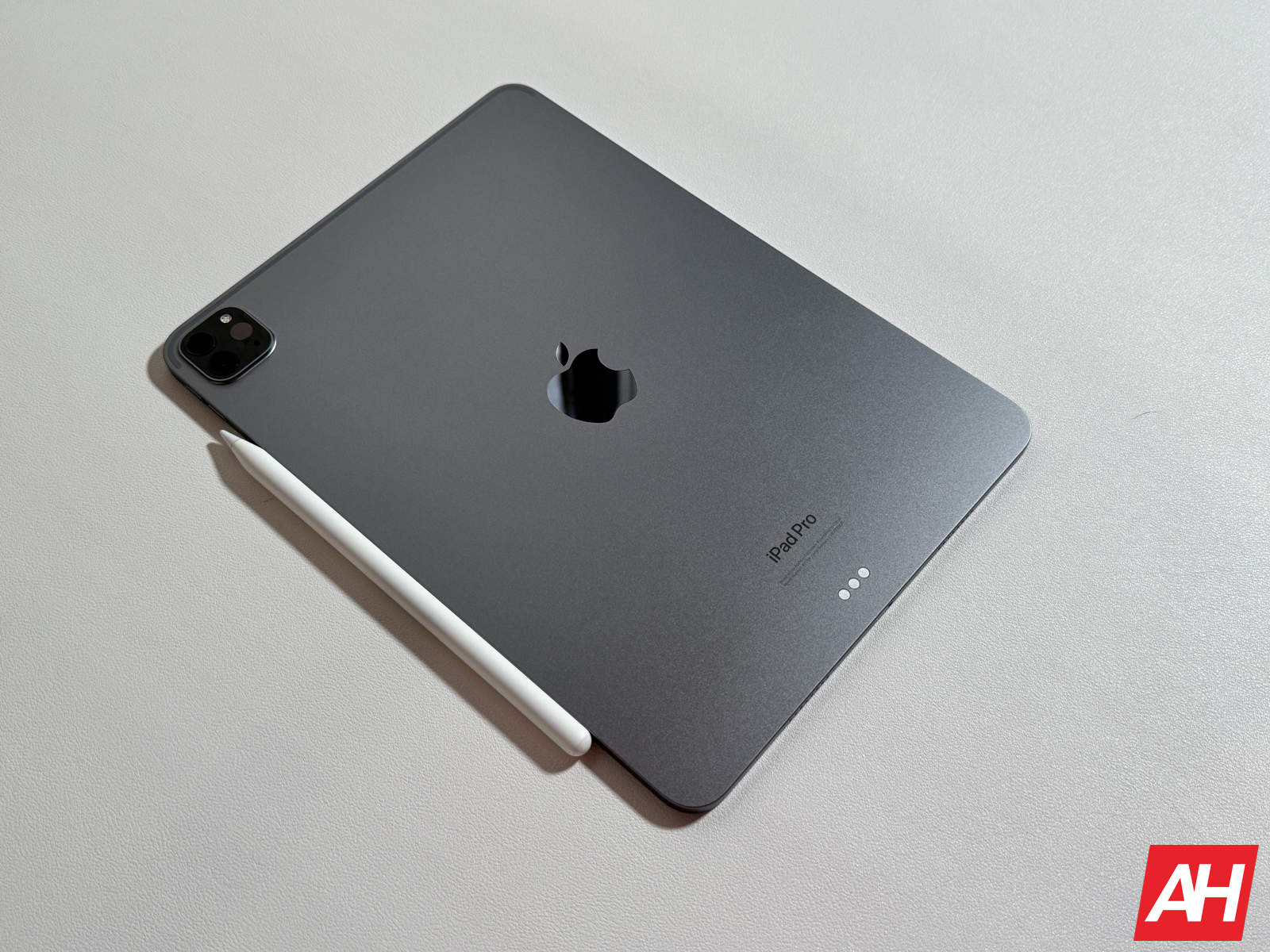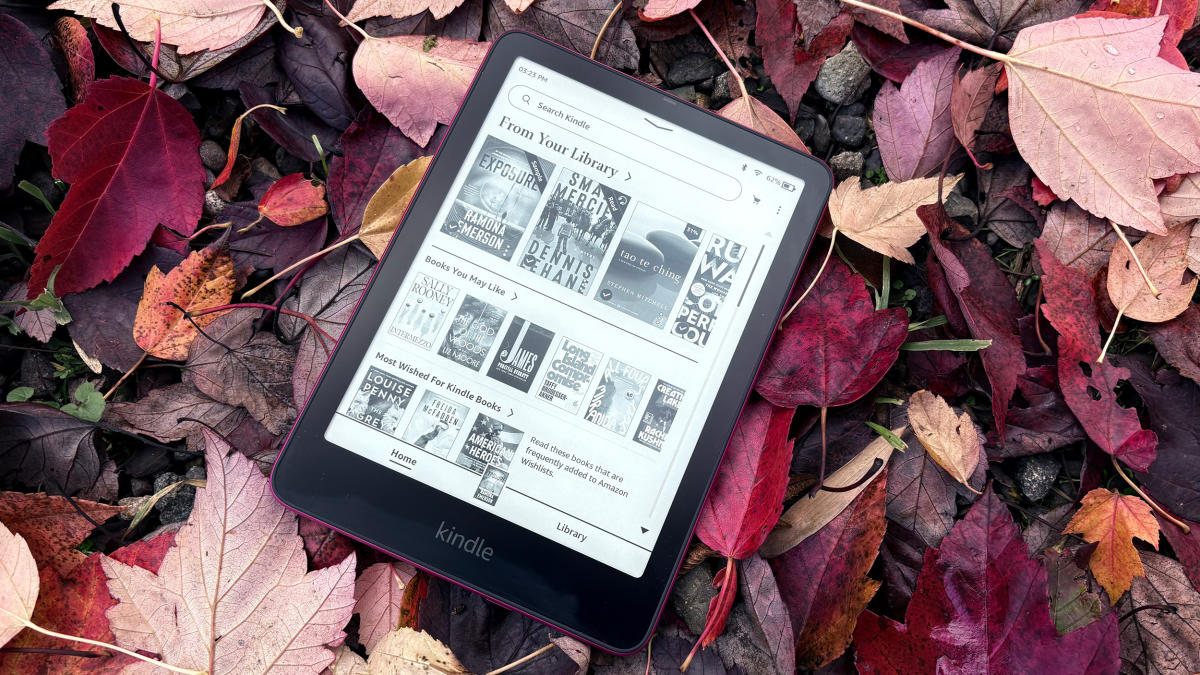Apple has really bloated its iPad lineup in recent years. Essentially, there are four different lines of iPads that you can choose from. There’s the iPad, iPad Air, iPad Mini, and iPad Pro. All of these are here for different use cases and different people. The regular iPad is almost solely for those in education (schools, school districts, etc). At the same time, most will buy the iPad Air or Mini, with the iPad Pro being more so for those “pro” users who might be using it to replace their laptop.
This is why we have come up with this buyer’s guide for the iPad. Helping you get the best iPad for your use-case. So you can pick out the best iPad and not waste any money. So here are the best iPads you can buy in 2023.
Best iPad for most people

iPad Air (6th Gen)
The iPad Air has finally been updated after two long years. Now, the iPad Air comes in two sizes – 11-inch and 12.9-inch. It also comes with the M2 chipset. So it’s a pretty powerful iPad, making it perfect for most people. The 11-inch iPad Air starts at $599 for 128GB of storage, with the 12.9-inch model starting at $799. Previously, the iPad Air was available in either 64GB or 256GB at these same prices. So definitely a nice upgrade. You can opt for 256GB, 512GB, and 1TB as well.
If you’re thinking about getting the iPad Air versus the iPad Pro, there are a few differences. For instance, the iPad Air does have a fingerprint sensor for Touch ID, instead of using Face ID. It also has a single camera on the rear, with no LiDAR sensor. The only other major difference is going to be the display. The new iPad Pro models have OLED displays, while the iPad Air sticks with LCD. There is a pretty big difference, and if you are planning to use this for a lot of streaming, you might want to splurge on the iPad Pro. Additionally, it sports the M4 processor over the iPad Air’s M2. That won’t translate to much of a difference in terms of performance because iPad OS can’t really take full advantage of the chipset’s power – yet.
Interestingly, now that the iPad Pros are so thin and light, the iPad “Air” is not the thinnest nor lightest iPad that Apple sells. The iPad Pro is both thinner and lighter. So that is something else to consider if you really want to get an iPad that is lightweight.
However, the iPad Air is a really great option for those who want a family iPad. That’s because it’s great for streaming media and also great for getting some work done with the Magic Keyboard, as well as a few other great third-party keyboards from Logitech, among other companies. It won’t replace a laptop, but it can work in a pinch.
Buy at Best Buy
Best Cheap iPad

iPad (10th Gen)
- Price: $449
- Released: October 2022
- Where to buy: Target
The iPad tenth generation is the best cheap iPad that you can buy today. It is the cheapest new iPad available. It’s not the best iPad, as it does have some interesting quirks, like the fact that it has a USB-C port and still supports the original Apple Pencil, which charges via Lightning. So, you need a couple of dongles to use the Apple Pencil with this iPad. But thankfully, Apple has made it a bit easier now, since you can get the Apple Pencil (USB-C), and only need a single cable to sync and charge your Apple Pencil, but you would lose pressure sensitivity.
This iPad is actually pretty good, all things considered. It’s the same size as the iPad Air, coming in at 10.9 inches, though the display isn’t quite as good, which is how Apple was able to keep the price down here. It also has the A14 Bionic chipset, which was in the iPhone 12 series, so it’s a few years older at this point.
Perhaps the most interesting aspect of this iPad is the fact that Apple gave us a horizontal front-facing camera. So it’s not in the right place for Zoom, Google Meet and Facetime. Whereas it is in the wrong place on virtually every other iPad. It does have a 12-megapixel camera on the front and back, so you can use it to take photos, but we would not recommend that.
Interestingly, the iPad 10th-generation does have it’s own magic keyboard folio, which many say is better than the actual Magic Keyboard available for the iPad Pro and Air models. It’s pretty interesting, but it is a good way to get a keyboard for your new iPad. The iPad 10th-generation, much like the iPad Air, only comes in 64GB and 256GB, with a $150 price difference between the two. So while it starts at $449, the one you would probably want, starts at $599.
iPad (10th Generation) – Target
Best iPad for a laptop replacement

iPad Pro 13
Apple has finally gone OLED with iPads. With the new iPad Pro in 2024, Apple has added OLED to the “Pro” iPads, it’s unclear when or if Apple will OLED to its other iPads, but this addition does make the iPad Pro a bit pricier this time around. So there are two models available now, an 11-inch that starts at $999 and a 13-inch that is $1299. These come with 256GB of storage by default, so much like the iPad Air, the Pro’s also got a bump in its starting storage.
For both of the iPad Pro models, you can get 512GB, 1TB, and 2TB storage options as well. The 1TB and 2TB options include a bump in RAM up to 16GB and an extra processing core on the M4 chipset. Those two higher-end models also include an option for a nanotexture display. This gets rid of reflections quite a bit, but it does degrade the quality of the display a bit. So that’s something to keep in mind.
I personally bought the iPad Pro 13 for myself, and I absolutely love this size for an iPad. It’s great for travel, and in fact, I’ve traveled with it only instead of bringing my MacBook Pro, and it’s been a great experience. That OLED display is insanely bright, especially for OLED. Of course, a bit part of that is because Apple is using Tandem OLED here, essentially, what Apple is doing is using two OLED displays here. This allows the display to get much brighter without destroying the color profile of the OLED. Which is one of the main selling points of OLED. The iPad Pro 13 (and 11-inch) get up to 1,000 nits of peak brightness. That makes it really great to use outdoors.
Buy at Best Buy

iPad Pro 11
The new iPad Pro 11 is basically identical to the 13-inch, with the only real change being the fact that it is smaller. Previously, the larger iPad Pro had a different display entirely, but that is no longer true. Both the 11-inch and 13-inch iPad Pros are using Tandem OLED displays. So you can get the same great display on both tablets. And that’s truly incredible.
With Tandem OLED, that is making the OLED display on the iPad Pro brighter, without sacrificing the color. This is because you’re basically getting two OLED panels here. The color reproduction on this panel is really incredible, and if you’re like me and use your iPad for a lot of streaming, then you’ll really notice the difference here.
But, this is going to be hamstrung by iPadOS, which is still pretty lacking. It’s almost like Apple is intentionally not unleashing iPadOS to keep the Macs selling like hot cakes. But if you want something that is close to a computer replacement, the iPad Pro 11 is another great option.
iPad Pro 11 – Amazon
Best iPad for reading and travel

iPad Mini (6th Generation)
- Price: $499
- Released: September 2021
- Where to buy: Amazon
The iPad Mini is surprisingly one of Apple’s most popular iPads. It’s surprising given the size, since it does have a 8.3-inch display. Making it only about an inch and a half larger than Apple’s most popular iPhone model – the Pro Max. But many love this iPad Mini since it is great for travel and reading eBooks, as well as watching content while on the go. Pilots absolutely love this iPad, since it is small enough to fit in the cockpit without any issues.
iPad Mini is a bit older at this point, but surprisingly, it has a more recent chipset than the regular iPad that’s only $50 cheaper. The iPad Mini sports the A15 Bionic chipset. This first debuted in the iPhone 13 series back in 2021. It does also have 12-megapixel cameras on the front and back, for taking photos and also using it for video calls on Facetime, Zoom and Google Meet (among others). It does also have Touch ID, much like every other iPad that is not the iPad Pro. Honestly, this is probably the best way for authentication. Since it is in the power button. Something you’re pressing anyways.
This iPad does also support the Apple Pencil 2nd-generation and Apple Pencil (USB-C), it does not support the first-generation Apple Pencil, because it’s Lightning. We’d recommend pairing this with the Apple Pencil second-generation. Apple does not sell any keyboard for the iPad Mini, but it does support Bluetooth keyboards. We wouldn’t recommend buying one, since the iPad Mini is so small, any keyboard case is going to be very cramped. If you do get one, don’t get a keyboard case, but an external keyboard.
Finally, let’s talk pricing. The iPad Mini comes in two storage capacities. That’s 64GB for $499 or 256GB for $649. Apple does also offer 5G connectivity for another $150 (plus what your carrier is going to charge you). Finally, the iPad Mini comes in four colors: Space Gray, Pink, Purple, and Starlight.
iPad Mini (6th Generation) – Amazon


















































































































































































You must be logged in to post a comment Login